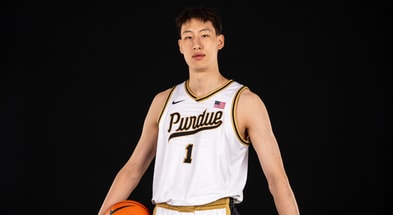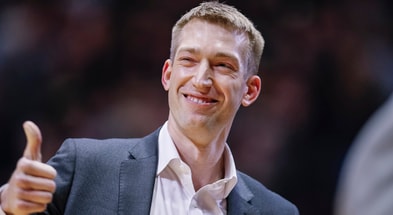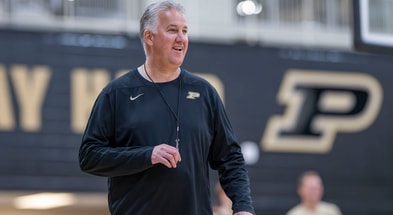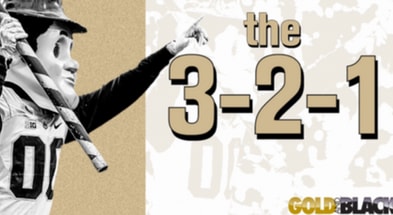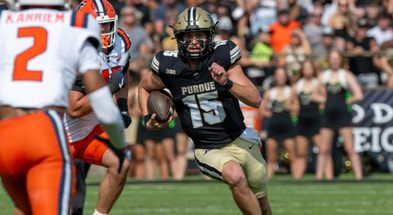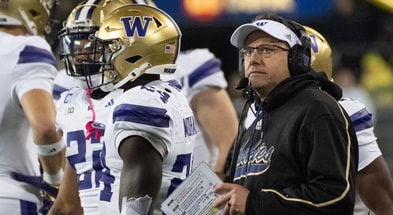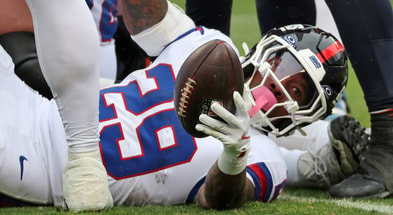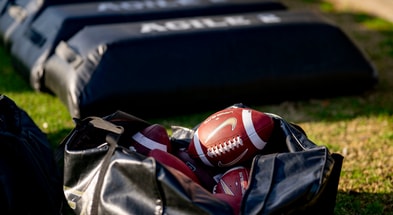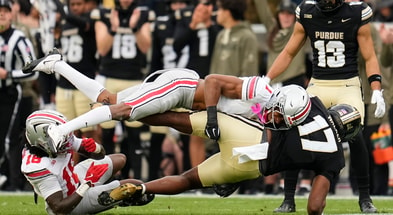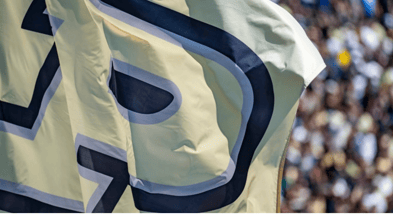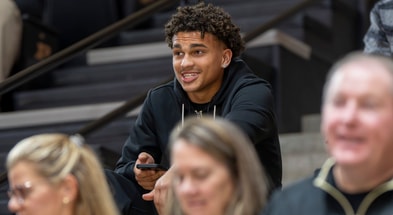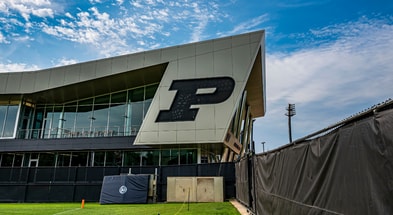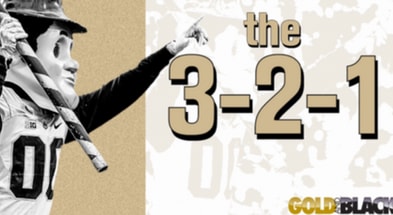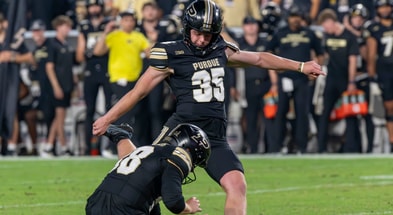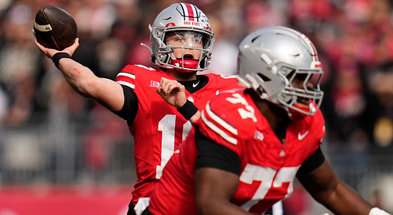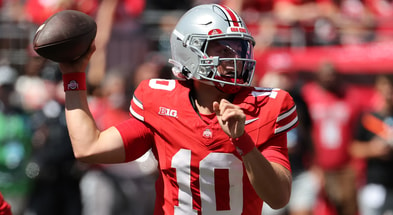Express Word: Purdue’s first real test, Devin Mockobee
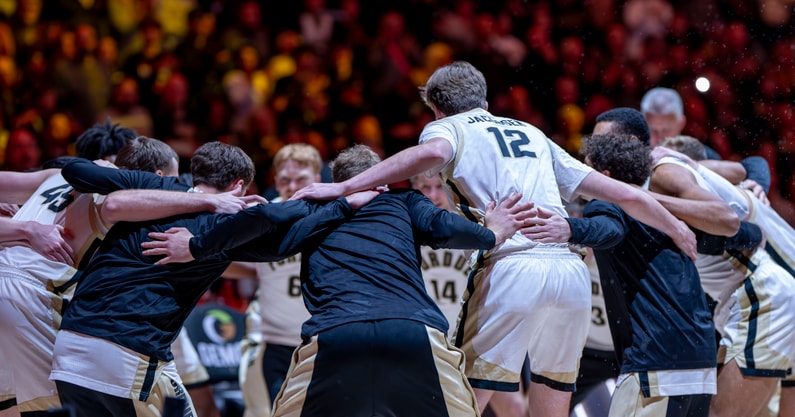
The Weekly Word is GoldandBlack.com’s weekly opinion column, written by Brian Neubert. In today’s edition, our annual preseason basketball predictions and much more.
PURDUE VS ALABAMA
Things get real now for Purdue, as the Boilermakers visit Tuscaloosa as the No. 2-ranked team a season after ‘Bama did the same to West Lafayette. It’s too early in the season for anyone to be all that certain about what they have, but this is a marquee game, for certain, and repeated kudos to Nate Oats and Matt Painter and those like them for being willing to play on other peoples’ home floors in the name of team development and résumé-building. Not everyone will. And if you think Painter schedules aggressively, look what Alabama does.

Even though it’s early, this is proving-ground time and for years now Alabama has made Purdue better. Tennessee has made Purdue better. The whole SEC has made Purdue better and that will continue Thursday night, as the Boilermakers take a swing at a No. 1-overall-seed sort of résumé win.
But first things first: Purdue has to get better. The over-reactions to an imperfect 2-0 start were amusing, but par for the course at the level the Boilermakers have reached, but there’s no doubt there’s meat left on the bone here in terms of improvement. That’s true of everyone in the sport, even the most established and experienced, like Purdue.
But can improvement really begin — like, really begin — until Trey Kaufman-Renn is back? He’s kind of a big deal, you know. I assume he’s playing in Tuscaloosa, but am basing that on nothing but the fact that the injury was minor, he’s practiced and his team needs him right this second. The value of early season games lies in getting reps with the team you’re going to play the season with. Purdue hasn’t done that yet in a game that counts.
They need Kaufman-Renn back ASAP, but also need a higher competitive gear to surface as the level of competition bumps up. The rebounding thing has been about aggregate physicality 1 through 5, tenacity and awareness. Kaufman-Renn will change things for the better but may not outright fix everything. Dribble containment, same deal. A grinding sort of mentality across the board would be helpful. Not sure you’ve seen it yet.
Purdue is a precision program now. It’s about skill, offensive execution, substance and attention to detail. But if it is going to be as good as it can, and really should, be, it’s going to have to get dirt under its fingernails, starting at Alabama.
DEVIN MOCKOBEE’S LEGACY
Last week, Devin Mockobee‘s playing career came to an end in regrettable fashion: Injured, on the heels of a season-and-a-half of nothing but constant, suffocating losing. Did he deserve better? Sure. Lots of people do, but deserve’s got nothing to do with anything.
Mockobee should be remembered around Purdue with high regard, not because he was a great player, which he wasn’t, but because he was a classic overachiever who belied the climate around him, which deserves mention. He could have left a bunch of times like virtually all the decent players around him did. I’m sure it probably was irritating holding his ground for the sake of a great degree while three different coaching staffs threw money at unproven players. Despite miserable results week after week, he never seemed to stop playing his you-know-what off.
But that the degree and opportunity in West Lafayette, and likely the bond with fans, kept him here spoke to a wise, big-picture-minded young man, characteristics that will serve him well out in the world.
THROW THEM BOTH IN THE OCEAN
For college football power-brokers, the television business has been an ATM. Live sports is gold, college football is culture and if you just keep asking for more, you’re going to get it. At least to this point.
As power conferences inch toward their next media-right deals, they ought to pay close attention to this game of chicken being played between Disney’s ESPN and ABC properties and Google’s YouTube TV, one of the largest broadcast carriers in the country.
First off, let me say this in no uncertain terms: There’s no good guy here. If you think either party here is genuinely looking out for consumers — fans, as it were — or trying to keep costs down for them out of benevolence, well, they’re not. Corporate America is going to do what Corporate America does.
But the notable development here that college football should take note of is that this drew out. Normally when these Cuban Missile Crises play out, public outrage is weaponized and things resolve themselves as soon as network says to carrier, “Yeah, but football.” This time it didn’t. YouTube TV held its line and seized leverage over Disney due to its rates structure with other partners.
Someone actually stood up to football. I don’t know about you, but I don’t see a whole lot of outrage out there against YouTube TV. I personally love the service, but the price needs to stop going up every year. Google doesn’t give a damn about my bill or yours, but by standing up to football, it is ostensibly not just trying to max out its profits but also minimize costs being passed to us.
Again, there’s no good guy here — they should both be thrown in the ocean, if you ask me — but this is a warning shot that suggests that money is not an infinite resource in these matters and football might not always be the nuclear … uh, football.
When you look at the NCAA’s new revenue-sharing model, it is built around a perilous assumption: That these media deals are going to get more and more lucrative every time they’re written. Are they? And are we sure that the drama that comes with these multi-platform deals isn’t going to alienate casual viewers.
Remember: There are die-hard, dedicated viewers of certain teams and conferences, but also millions of households where if football is being played, you just have it on. Thus, 238,000 bowl games in December.
XXXXXX.
JUCO FOOTBALL RECRUITING
Purdue has started offering junior college recruits. While that might seem unsettling to those aware of JUCOs’ checkered history at this particular program, in this particular town, it shouldn’t be.
Top 10
- 1Breaking
College GameDay picker
Pitt icon revealed by ESPN
- 2Hot
Mack Rhoades
Future with CFP revealed
- 3
Arkansas Coaching Search
Intel on James Franklin & more
- 4Trending
Big Ten
Inside the proposed $2.4B deal
- 5
Troubling message
ESPN, YouTube TV dispute
Get the Daily On3 Newsletter in your inbox every morning
By clicking "Subscribe to Newsletter", I agree to On3's Privacy Notice, Terms, and use of my personal information described therein.
In fact, it’s a great move to look that direction to a marketplace now bound to be under-recruited while everyone fixates on recruiting some peer program’s 67th-best player out of the transfer portal.
Recruiting J.C. players might present opportunities, chances to find gems where no one else is looking, players humbled by eating at Arby’s every night after practice instead of being wined on dined on visits and offered money for no other reason but to enroll at somebody’s school.
It’s the same with JUCOs as any other recruits: You just have to find the right ones. You have to build networks of people you trust, keep in touch and be there the moment some former high school offensive tackle moves to center in Middle of Nowhere, Kansas, and suddenly looks like a player. There are late bloomers out there. You just have to find them.
But programs like Purdue ought to be recruiting JUCOs every year and trying to do it better than anyone else. Just don’t sign the idiots.
THERE HAS TO BE A BETTER WAY
Full disclosure: If I were an AP Top 25 voter, I would have voted Houston the preseason No. 1, not Purdue. The Cougars return just as much if not more, accomplished more last season and, you know, beat the Boilermakers head to head. But there was no wrong answer, same as there was no right answer.
But what happened this week underscored how silly a poll that carries so much weight actually is. Purdue fell from 1 to 2 despite winning both its games. Houston moved from 2 to 1 after laboring with Towson to much the same extent Purdue kind of labored with Oakland. The Cougars are not missing an All-American, either.
Difference was, Purdue kind of labored on Friday night, when there was no football on. Houston played Saturday, opposite college football, and on ESPN, which a chunk of the country does not have right now. Houston laundering its final score better than Purdue did compel voters to flip-flop the two. Fine. Who cares? No wrong answer.
But it does just remind of how flawed this end-all, be-all poll is.
When James Franklin’s seat got warm at Penn State, it was that footnote about his record against AP-ranked teams of a certain stature that stuck to him like glue and contributed mightily to his ouster, which is fair, but also sort of funny when you consider that those polls are voted on by people who are too busy doing their jobs with the schools they cover to really do their ballots justice. No one should ever harass voters whose ballots are made public — it’s lame, cruel and futile — but you see how illogical some of the stuff is. How can it not be? This is not these peoples’ job, yet the poll is treated like some sort of stone tablet handed down every Monday around noon.
This is a media poll. And that was cool like 20 years ago, when the newspaper beat guy was the authority. The newspaper beat guy of those days is either out of the business and or now works for the TV station that shouldn’t even be part of this poll, because TV doesn’t really cover much of anything. Or they work for a site like ours, which isn’t really establishment media even if it conducts itself as such in most ways.
This isn’t 1990 anymore. Major newspapers have closed and consolidated and gone clicky. Local TV stations are just corporate vessels for dwindling advertising revenue. The prominent columnist in most markets has been replaced by Twitter algorithms. The work matters, but only to a point.
The USA Today ownership group, which you might have previously known as Gannett, is tied to the coaches poll, so that removes many important markets from AP-poll participation.
By the way, Big Ten markets owned by USA Today: Detroit (Free Press), Columbus, Indianapolis, North Jersey, Milwaukee, Cincinnati and Des Moines. We should be taking any poll that excludes those markets’ opinions on the Big Ten seriously? The local papers in Lafayette, Bloomington, Lansing and Iowa City are non-AP poll-aligned. I’m only using the Big Ten as a face to put on this, but those are the people who should be voting.
Point is, between job-hopping, shifting landscapes, conflicts and in some cases general competence of the voter pool, it is evident that if people want to make this is a more credible endeavor, there has to be a better way. The U.S. Basketball Writers Association is better suited to take this on.
